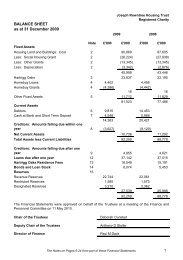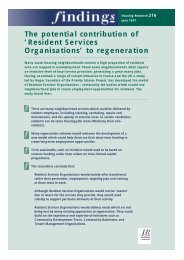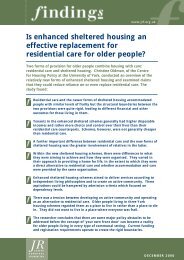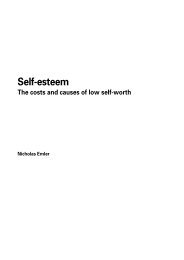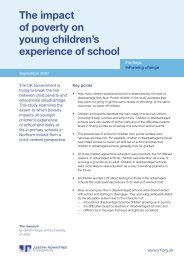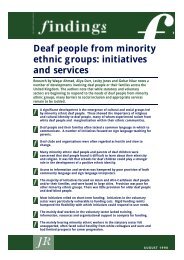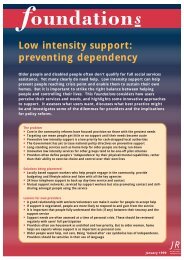Community participation - Joseph Rowntree Foundation
Community participation - Joseph Rowntree Foundation
Community participation - Joseph Rowntree Foundation
Create successful ePaper yourself
Turn your PDF publications into a flip-book with our unique Google optimized e-Paper software.
<strong>Community</strong> <strong>participation</strong><br />
These problems are particularly acute for marginalised groups when there are<br />
pressures to ensure ‘representativeness’. Participants from under-represented<br />
groups like the black and minority ethnic (BME) community or young people often<br />
find themselves in danger of burn-out because they become the BME or the young<br />
people’s representative to whom a whole array of institutions then turn. Chloe falls<br />
into this category, as an articulate young person from a disadvantaged<br />
neighbourhood who has shown herself willing to get involved in governance<br />
activities. The youth worker who works with her is vigilant for any signs that she is<br />
being exploited by institutions or is at risk of burn-out.<br />
Conclusion<br />
This chapter argued that the dominance of a small group of insiders in community<br />
<strong>participation</strong> lies not in the behaviour of particular individuals or institutions but in the<br />
properties of local governance systems as a whole. It turns out, as Marilyn Taylor<br />
argues, that ‘the much maligned “usual suspects” are often created by the<br />
partnership system itself.’ 22<br />
We identified six ‘network dynamics’ whose cumulative impact serves to explain why<br />
community <strong>participation</strong> arrangements tend to run into this usual suspects problem.<br />
A clearer understanding of these dynamics helps us to see where the points of<br />
greatest leverage on the problem are. If the emergence of a community elite is highly<br />
likely, given the way local governance systems are currently put together, we can<br />
use this understanding to frame recommendations both for confronting this reality<br />
more honestly in policy and practice, and, in the long term, for taking steps to<br />
remedy it. It is to this task that our concluding chapter turns.<br />
46




